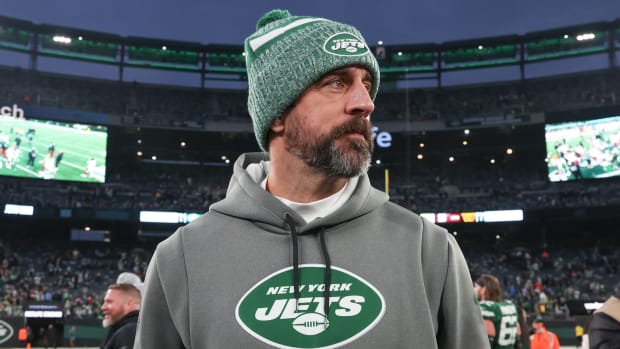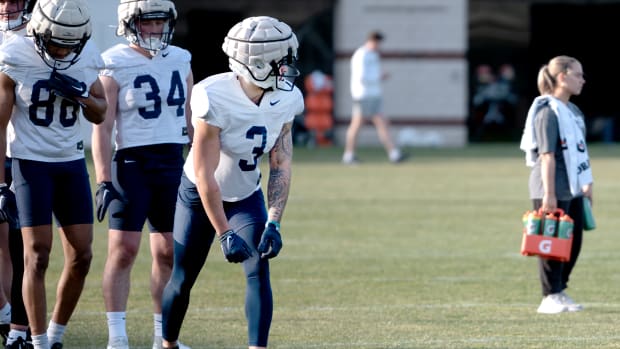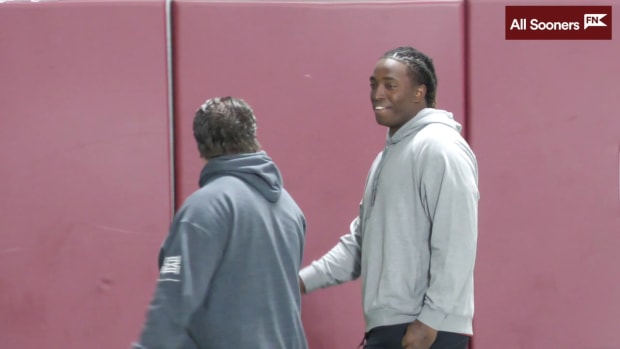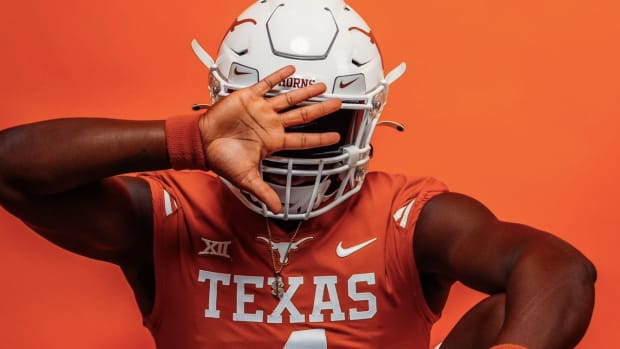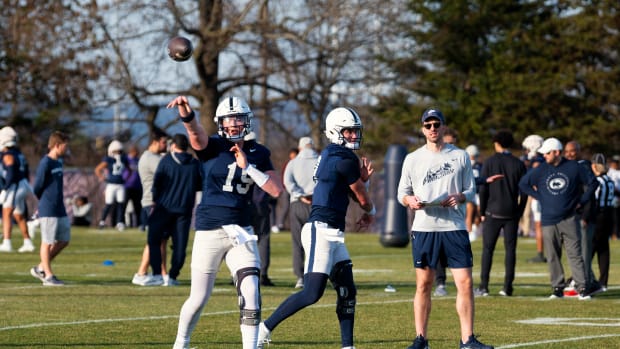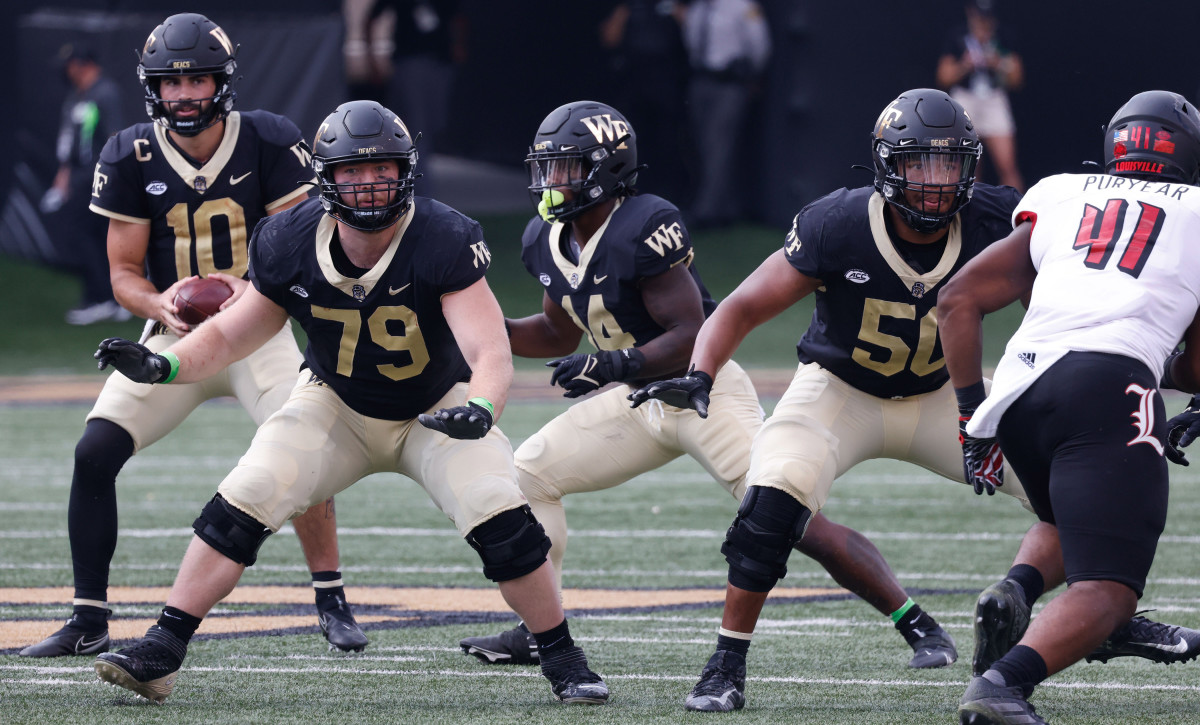
Wake Forest's Confounding RPO System Has Demon Deacons Offense Rolling
They are not partying like it’s 1944 in Winston Salem. Yes, Wake Forest is 6–0 for the first time since the penultimate year of World War II. Yes, they’re the last unbeaten team in the ACC in a year of intense churn within the league. But head coach Dave Clawson cautions that they’ve been here before, even recently after a 5–0 start in 2019 soured to an 8–5 finish. The constant through his tenure has been the offense (dubbed the Clawfense) and its unique anxiety-inducing backfield exchange between quarterback and running back.
Once you know what you’re looking for it’s hard to unsee the action. An elongated mesh point that makes it seem like those two inhabit their own space-time continuum amidst 20 other bodies. But it is just one part, albeit an important one, in Wake’s broader offensive system, one that that through Week 7 is scoring the 12th-most points per game of anyone in the country.
“We have a variable tempo running game,” Deacons offensive coordinator Warren Ruggiero told Sports Illustrated. “Some things happen very fast. Some things happen somewhere in the middle, and some things happen very slow. The one thing that happens slowly, everyone looks at and says oh my gosh and that’s why they love to talk about it.”
Tempo is one of the biggest buzzwords in current football strategy. Some teams huddle while others don’t. Some teams rush to the line of scrimmage to rip plays off within 12–15 seconds of each other, while others hurry up and wait by getting set and checking with the sideline for an audible. But much of the tempo discourse centers around what happens before the ball is snapped. What’s interesting about Wake is how they vary tempo once the play actually starts.
Ruggiero has been with head coach Dave Clawson since 2009 when they were at Bowling Green. They arrived in Winston-Salem in 2014 and have built a steady bowl team at a program that had bottomed out after the heights of the 2006 conference title season. What started as dabbling in the run pass option turned into majoring in it over the years at Wake to the point that Clawson said in a coaching clinic that “our entire system is RPO-based." Now it’s basically all they run, and Clawson is quick to defer plaudits about who really is the brains behind the operation despite the Clawfense moniker.
“We did some RPO stuff at Bowling Green,” Clawson said. “There were some complementary RPO plays but it wasn’t the bread and butter of what we did and we got here and I just think at Wake Forest you have to be a little bit unconventional. Quite frankly, some of the things that worked for us at Bowling Green didn’t work for us here. I give Warren credit for evolving and changing things and tweaking the system that fits the skillset.”
When they got to Wake and realized the talent that they had, running a classic drop-back passing game was out of the picture. In their first three seasons, only one team in the country allowed more sacks; nearly 10% of all drop-backs found their passers on the turf. Ruggiero joked that by the time the quarterback took the third step of his drop, the play would end up a sack. Now, Clawson says half of their passing plays start out as runs which makes it easier for the offensive line. Run blocking as much as possible can help level the playing field against some of the best pass rushers the Clemsons or Florida States or Miamis of the conference can line up. They can’t simply tee off on what they assume will be a passing play because so much of what Wake does starts out as a run. The runs themselves have also come behind more double team blocking, which is easier for offensive linemen to execute.
The playbook is not encyclopedic in length. Some offenses choose to answer the questions defenses pose with myriad plays, while Wake Forest builds multiple answers into relatively few plays.
“I would say that what we do is very systematic like the triple option,” Ruggiero said. “They can just go out in the game and not do anything different that week game plan-wise, their offense is a game plan, where a lot of other offenses are ok, what’s the defense doing? Let’s put this in this week and let’s put that in this week and let’s try and change this on this route because they’re doing that. We don’t do that. We run our system.”
But what about the oddity in that system? Ruggiero said it would take an hour to answer that question, but the running back has plenty of keys that vary based on how the defense is aligned. The quarterback’s footwork is also tied into that, and that’s how the timing of the play can change. The running back has to assume that the quarterback will pull the ball and throw at any time, so he cannot vice grip the football—the quarterback is in control. Actually reading what linebackers and safeties are doing can freeze their aggression, which is true for any offense that involves a read element.
Watch NCAA football games online all season long with fuboTV: Start with a 7-day free trial!
You can see here on a play against Syracuse how passive this can force defenses to play, with linebackers seemingly waiting on something to happen and one defender flying down into the box before rapidly backpedaling once the quarterback pulls the ball. All the indecision invites quarterback Sam Hartman to pull the ball and pick up a first down.
“There aren’t too many teams that have tried to just sit there and defend us the same way one year after another, it’s kinda weird,” Ruggiero said. “When you say 'how have they adjusted', I don’t know if I’ve really got a great answer for that. It just changes so much every year and every week what times teams try and do I guess.”
Wake’s staff feels like as long as they execute, their offense has enough answers to always be right. Halfway through the season, that’s certainly the case. The Clawfense gets the job done, even if it’s pretty unique once you know what to look for.
More College Football Coverage:
• Has The SEC Taken Things Too Far?
• What a 12-Team Bracket Would Look Like After Week 7
• Washington State's Coaching Staff Can Blame Only Themselves
• The Swift Fall of Ed Orgeron at LSU: Inside a Stunning Post-Title Collapse
Sports Illustrated may receive compensation for some links to products and services on this website.
